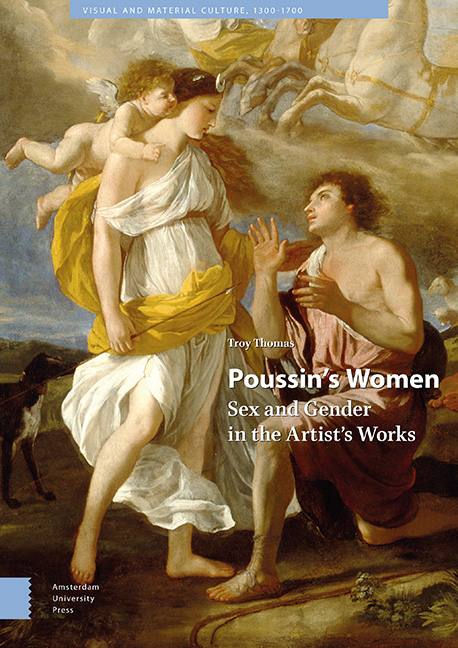Book contents
- Frontmatter
- Contents
- List of Illustrations
- Acknowledgments
- Part I – Violence and Virtue in Poussin’s Representations of Women
- Part II – Poussin’s Women—Cultural and Social Frames
- Part III – Paintings and Drawings
- 1 Predators
- 2 The Lustful—Triumphant, Impulsive, Spying, Conquered
- 3 Lovers—Genuine, Controlling, Unrequited, Jealous
- 4 Killers, Transgressors
- 5 Victims I—Killed, Assaulted
- 6 Victims II—Voiceless, Deceived
- 7 Heroines, Great Ladies
- Conclusion
- Bibliography
- Index
2 - The Lustful—Triumphant, Impulsive, Spying, Conquered
Published online by Cambridge University Press: 20 November 2020
- Frontmatter
- Contents
- List of Illustrations
- Acknowledgments
- Part I – Violence and Virtue in Poussin’s Representations of Women
- Part II – Poussin’s Women—Cultural and Social Frames
- Part III – Paintings and Drawings
- 1 Predators
- 2 The Lustful—Triumphant, Impulsive, Spying, Conquered
- 3 Lovers—Genuine, Controlling, Unrequited, Jealous
- 4 Killers, Transgressors
- 5 Victims I—Killed, Assaulted
- 6 Victims II—Voiceless, Deceived
- 7 Heroines, Great Ladies
- Conclusion
- Bibliography
- Index
Summary
Abstract
Poussin explores the full range of lust and uninhibited sexual desire in his mythological works, from jubilant exuberance and celebration of passion in his Triumph of Pan and Hymenaios Disguised as a Woman During an Offering to Priapus, to the impulsive erotic infatuation of Armida in his two versions of Rinaldo and Armida; and from shepherds and satyrs spying upon females in Venus Espied by Shepherds and Landscape with Polyphemus, to lust and love conquered in Amor Vincit Pan and Venus and Mercury. He examines every aspect of desire: love's triumph, its darker impulses, and finally its defeat.
Keywords: Lust, Triumph, Impulsiveness, Spying, Conquered
Poussin explores the full range of lust and uninhibited sexual desire in his mythological works, from jubilant exuberance and celebration of passion in his Triumph of Pan and Hymenaios Disguised as a Woman During an Offering to Priapus, to the impulsive erotic infatuation of Armida in his two versions of Rinaldo and Armida; and from shepherds and satyrs spying upon females in Venus Espied by Shepherds and Landscape with Polyphemus, to lust and love conquered in Amor Vincit Pan and Venus and Mercury. He examines every aspect of desire: love's triumph, its darker impulses, and finally its defeat. It is sometimes thought that Poussin elected to paint scenes that aroused sexual desire in his male audience early in his career, before he became famous, in order to make money at a time when he was struggling to survive in the art world. In fact, he created scenes of erotic delectation throughout his career, not just at the beginning. Even among his late works, sexualized females are found, as in his Landscape with Polyphemus, which includes the highly erotically charged image of lecherous satyrs spying on naked nymphs, a repetition of the same motif found in one of his earliest extant paintings, the Dresden Venus Espied by Shepherds. Other late pictures with nude nymphs include his Birth of Bacchus (1657, Cambridge, MA), and his final work, the Apollo and Daphne (1664, Paris). While it is true that erotic nudes are more often encountered in his early works, he continued to produce such imagery throughout his career, right up to his last painting.
- Type
- Chapter
- Information
- Poussin's WomenSex and Gender in the Artist's Works, pp. 123 - 170Publisher: Amsterdam University PressPrint publication year: 2020



